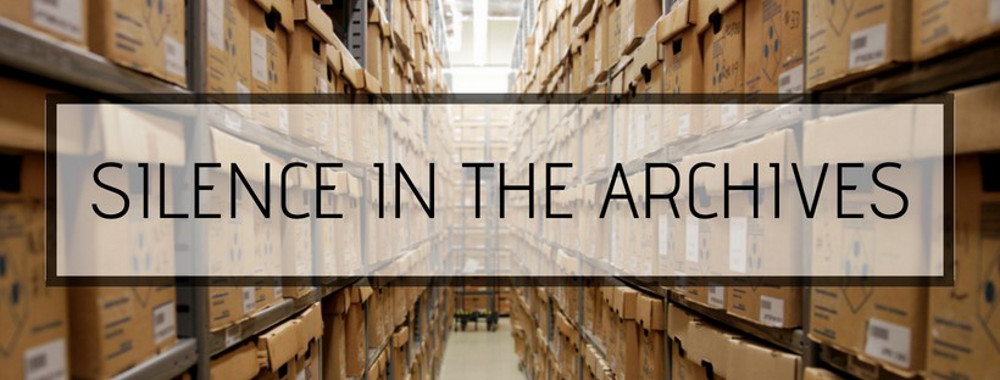 This year at the Cabaret of Dangerous Ideas I decided to talk about silence in archives and what that means in terms of individual and collective freedoms, as well as what it leaves behind as a narrative. While seemingly something that is viewed impartially and from a distance, once you start scratching the surface we can find some uncomfortable evidence. Last year in CODI we discussed if truth could be found in the archives as we were facing ‘alternative facts’. The debate moved onto some hilarious discussion on what Trump’s archive might look like (including the giftshop!) and people being uncomfortable at the suggestion there could be ‘rogue archivists’. This year I hope we can take the serious issue of what is missing in our archives and bring some light-heartedness to shine a light on it and make us think.
This year at the Cabaret of Dangerous Ideas I decided to talk about silence in archives and what that means in terms of individual and collective freedoms, as well as what it leaves behind as a narrative. While seemingly something that is viewed impartially and from a distance, once you start scratching the surface we can find some uncomfortable evidence. Last year in CODI we discussed if truth could be found in the archives as we were facing ‘alternative facts’. The debate moved onto some hilarious discussion on what Trump’s archive might look like (including the giftshop!) and people being uncomfortable at the suggestion there could be ‘rogue archivists’. This year I hope we can take the serious issue of what is missing in our archives and bring some light-heartedness to shine a light on it and make us think.
Silence isn’t always blank space. It can be an indicator, a marker, a warning, dangerous for communities and individuals. It can create a vacuum that is filled by fiction that is created and facts surmised, then recorded as such. This begs the question of motive. We know that human beings have the capacity for subtly changing the story, this is played out in the media frequently. How many retractions do we see or hear of, when false or claims are made without evidence? We have seen this for the Hillsborough disaster, systemic child abuse and thankfully a body of evidence has been able to be gathered to bring understanding and justice in these cases. On the positive side, re-creation of those perspectives from individuals or other evidence has happened. Testimony and activism has created a stronger evidence base for women’s voices and voices of communities that had not been recorded or evidenced. Who else is still waiting to be heard?
Destruction of archives has also created disquieting quiet, lack of creation of recorded information on individuals has created silences and individuals have had their archives destroyed to silence theirs or family stories, or to hide misdemeanours or embarrassments (cue the evil chuckle, twirling moustaches and dark cloaks!). Speaking out or whistleblowing has allowed some narratives to come to light and break the silence for more recent histories and built a body of evidence. Within this very serious and dangerous gap there is also the ridiculousness of the embarrassed politician or self-motivated delusional storyteller chasing fame. We need to examine who and what has filled that gap. Is it those that shout loudest or is it real evidence, and how can we tell? Time to become detectives! Watch out for skeletons in the closet!
Thinking about this in a teaching and research skills context, archival research is not just about ferreting out what might be seen as ‘hidden’, but stepping back, surveying the landscape and moving in and out of the stories that might be connected, but not necessarily directly associated with that history. So our researchers and our archivists have the potential to be positively dangerous people. The information will out. Silence is loud.
You can buy tickets to see Rachel’s show on Wednesday, 22 Aug 2018, 20:10, New Town Theatre here.


